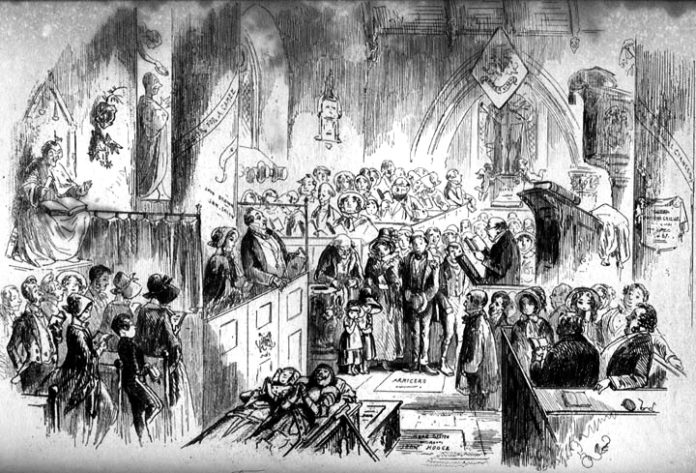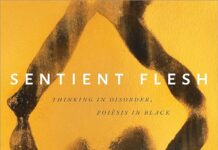by Elisha Cohn
This essay was peer-reviewed by the editorial board of b2o: an online journal.
I was intrigued by the choice of Bleak House as V21’s representative novel, how the audacious, even pugnacious, and enterprising mood of this collective critical gesture resonates with or against the bleakness of Bleak House, a novel that invites attention to affective atmosphere. What is that bleakness? How does it emanate, and what does it do? More self-reflexively, how do the critical paradigms that newly attune us to atmosphere or mood reimagine the novel’s project, as they also ask us to consider the ethos of our own? Prompted by influential critics whose careers begin in Victorian studies (Miller 1988; Sedgwick 2002; Anderson 2006; Felski 2008), I hope to think about the mood of critical discourse to emphasize the conditions that allow knowledge and value to come into view. Ours is a field that drew considerable energy from the hermeneutics of suspicion, thanks to the Victorian novel’s pervasively social vision. But perhaps thanks also to Victorian literature’s continual, dialectical evaluation and reevaluation of individual perspectives within living systems, it has also brought us important work on the affects that accompany specific forms of theory. So how does the bleakness of Bleak House inflect today’s project—its reparative status, its aura of regenerative optimism, or intrepidity?
Mood is said to lack a telos in itself; Jonathan Flatley defines it as “a kind of affective atmosphere, … in which intentions are formed, projects pursued, and particular affects can attach to particular objects” (Flatley 2008: 19). But mood has a paradoxical status: if philosophy positions it as a precondition for thought or action, it is also associated (in Dickens and elsewhere) with stasis, particularly the stasis of melancholy. We tend to understand narrative as structured by the temporal framework of plot and event, but mood offers a vocabulary for what evades this forward drive, deferring or blocking plots of coming-to-knowledge. Mood, then, might offer an importantly minimalist way of indicating a narrative mode––but also a critical motive––that declines the desire for mastery.
In the case of Bleak House mood or atmosphere might be said to reformulate narrative conventions associated with emotional fulfillment and the production of knowledge by working as a textual effect. Bleakness flows among characters rather than belong to any of them individually, permeates even the not-character of the omniscient narrative voice, suffuses the polluted fog that flows from London to the suburbs, the “filthy air of our prosperous England” that John Ruskin was so appalled to find represented in fiction. Esther assures us that John Jarndyce has transformed the affective character of the house he inhabits, but bleakness lingers, an intransigent, if low-key, global effect. Implicitly, the institutions (houses, destroyed houses, courtrooms) that shape sociability do so not only by mapping out pathways and blocking off windows of relation, but by making those circuits of relation palpable as feeling. The map of London the novel creates archives these circuits of attractions and repulsions, hurts and pleasures. But because these feelings register bleakly, they elude recognition, purpose, or object. Bleakness reaches outward, too, to the implied reader––it constitutes a secret in which, à la Snagsby, the reader is a “partaker, and yet … not a sharer,” not consciously implicated but creepingly registering effects (Dickens 2003 [1852-53]: 607). If we cannot attribute or contain bleakness to any one character, if it instead responds to the distorting pressures of a system without being presented as adequate motivation to launch a critique of that system, how does this diffusive state affect the role of knowledge in the plot? The project of producing critical knowledge of the text?
By suspending the importance of outcomes, the less than revelatory quality of mood lights up how Dickens’s novel, even qua detective novel, thwarts the production of stable knowledge. In Esther’s narrative, atmosphere pulls against the plot of her growth, development, and avowed identity. This formal reticence might appear to suggest that her style reflects her post-traumatic consciousness, its holes of unspeakability signaling the presence of wounds that cannot be more directly owned. But the atmosphere is also due to more than her avowed self-effacement because it becomes a general narrative principle, infusing even the illustrations. In the third-person, present-tense narrative it evokes an ongoing, systemic process never to be completed and not located in or attributable to any one consciousness or agent. So atmosphere” speaks to Dickens’s interest in Bleak House in privileging feeling and mood over plot, event, or revelation.
I propose one specific consequence of moodiness in Bleak House for V21’s context. The novel’s atmospherics provide a way of thinking about feeling—even and especially about critical feeling—as shared but nonteleological. The role of this concept in the novel—at least as our present critical vocabulary for mood would configure it—speaks back to the critical project in less than fully optimistic or energizing, yet valuable, ways. I would recognize that my own interest in novelistic mood partakes of same atmospherics of deferral within Bleak House itself; I see a resonance between the novel’s deferral of the final potencies of self-reflection and my own desire to find it there. Thus I would question whether my theoretical bent toward the inassimilable, the incommensurable, and the least instrumental aspects of the text too willingly accepts the marginalization within the academy of the kind of knowledge the humanities are supposed to produce. Yet I think this sense of deferral, and its lack of triumphalism, also might allow us to quietly value the practices of repeated readings performed not only by experts, but also by Dickensians who revisit novels not to definitively gain a purchase on the world—to effect political revelations; to transform perceptions, forms of knowledge, or communities—but to experience a world. So while we might draw on the idea of atmosphere to stress the efficacy of the text in attuning its readers to new sensations and sympathies, nonetheless, I would desist from offering a too-confident model of what these bleaker feelings allow us to know.
References
Anderson, Amanda. 2006. The Way We Argue Now: A Study in the Cultures of Theory. Princeton, NJ: Princeton University Press.
Dickens, Charles. 2003 [1852-53]. Bleak House, ed. Nicola Bradbury. London: Penguin.
Felski, Rita. The Uses of Literature. London: Blackwell.
Flatley, Jonathan. 2008. Affective Mapping: Melancholia and the Politics of Modernism. Cambridge, MA: Harvard University Press.
Miller, D. A. 1988. The Novel and the Police. Berkeley, CA: University of California Press.
Sedgwick, Eve Kosofsky. Touching Feeling: Affect, Pedagogy, Performativity. Durham, NC: Duke University Press.
CONTRIBUTOR’S NOTE
Elisha Cohn is Assistant Professor of English at Cornell University and the author of Still Life: Suspended Development in the Victorian Novel (2015).




